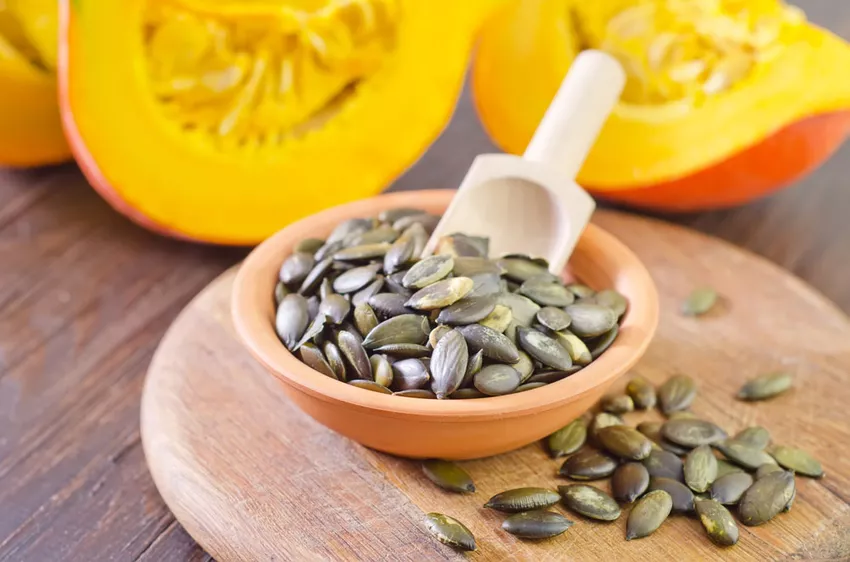Pumpkins aren't just for cooking. No, a pumpkin is also useful as a medicinal plant. You will be amazed at the abilities of the plant.
 Botanists classify the pumpkin among the berries. It can weigh up to 100 kilograms, making it the largest berry in the world. As a true all-round talent, it is not only suitable for consumption, it is also a great autumnal decorative element. Especially on Halloween, when the kids carve pumpkins to make scary faces out of them. Why? Because it's an old Halloween myth. Supposedly, the creepy faces protect the house from witches and ghosts on the evening before All Saints' Day.
Botanists classify the pumpkin among the berries. It can weigh up to 100 kilograms, making it the largest berry in the world. As a true all-round talent, it is not only suitable for consumption, it is also a great autumnal decorative element. Especially on Halloween, when the kids carve pumpkins to make scary faces out of them. Why? Because it's an old Halloween myth. Supposedly, the creepy faces protect the house from witches and ghosts on the evening before All Saints' Day.
The knowledge that the pumpkin is a medicinal plant is just as old as this myth. The pumpkin is said to have attracted a great deal of attention in Peru more than 12,000 years ago. Around 8,000 years ago, it was also one of the oldest cultivated and food plants in Central and South America. At that time people already knew about the healing properties of the pumpkin. Charlemagne even had the bottle gourd cultivated in the imperial gardens at the beginning of the 9th century specifically for its medicinal properties. Today's garden pumpkin was finally discovered by Columbus in 1492 on Cuba and transported to Europe by seafarers.
Why is the pumpkin so he althy?
Thanks to the many he althy ingredients, the pumpkin has been valued as a medicinal plant for thousands of years and used to produce medicines. It contains:
- fatty oil (oleic acid, linoleic acid)
- protein
- Minerals (Magnesium, Potassium, Calcium, Zinc, Selenium)
- Vitamins A, B, C and E, and beta-carotene
- Silicic Acid
- Fibre
What ailments does pumpkin help with?
The pumpkin is best known for one thing - for its positive effect on the urinary tract, bladder and prostate. Since it contains a lot of potassium and little sodium, it has a draining and diuretic effect. Thus, the pumpkin is a gentle remedy for bladder problems and kidney and prostate ailments.
Furthermore cover 100grams of pumpkin meat the daily requirement of carotenoids. These are important protective substances that protect our cells. For example, they are considered to prevent cancer and are even said to protect against heart disease.
The pumpkin is also a real slimming product because it consists of 90 percent water. In addition, the ingredients have a digestive effect. In addition, the immune system and nerves are strengthened by eating pumpkin pulp.
But the seeds of a pumpkin also pack a punch. For example, your fat consists of 45 percent high-quality unsaturated fatty acids. They also contain many minerals, vitamins and trace elements. The contained phytochemicals counteract, for example, a high cholesterol level. In addition, pumpkin seeds can provide a quick remedy for worms.
 ❖ Tip:
❖ Tip:After the pumpkin harvest, you can easily dry the seeds yourself. Remove the seeds from the halved pumpkin and then put them in a sieve. Wash thoroughly and remove the remaining pulp. Then spread out on paper towels and pat dry. Then let it dry in a dry, warm place. If you want, you can also roast them. For example something like this:

By loading the video, you accept YouTube's privacy policy.
Learn more
Load video
Always Unblock YouTube
Be careful! Do not confuse ornamental squash and edible squash
Under no circumstances should you confuse an ornamental pumpkin with a squash in your own garden. The ornamental gourd has no healing properties. Due to the toxic substance cucurbitacin, the small type of pumpkin is only suitable for decoration. If you eat it, it can cause nausea, vomiting, and stomach cramps.